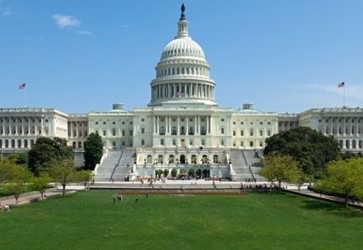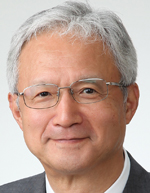Tech, Tax Cuts, Trump, & More — A Diversity Of Biopharma Perspectives For 2019

By Rob Wright, Chief Editor, Life Science Leader
Follow Me On Twitter @RfwrightLSL

Every year Life Science Leader is thankful for having so many executives and thought leaders willing to take part and contribute to our annual outlook issue (published in December). That being said, there are times when we can’t fit all of the great insight within the print pages of just one publication. When that happens, we turn to our exclusive and growingly popular online section — Beyond The Printed Page. Here you will find nearly 100 articles from biopharmaceutical industry thought leaders sharing opinions on very diverse topics — from learning from failure, to leadership by walking around, and just about everything in between.
For this installment, we have seven people from seven companies, sharing seven perspectives on seven topics all geared to help you get ready for 2019 and beyond. Participants in this article include:
- Cristina Csimma, PharmD, board member, Neuralstem
- Habib Dable, president and CEO, Acceleron Pharma
- Matt Kapusta, CEO, UniQure
- Alton Lo, managing director, J. Wood Capital Advisors
- Peter Meath, managing director & industry head for life sciences, commercial banking, J.P. Morgan
- George Nakayama, representative director, chairman and CEO, Daiichi Sankyo
- Smital Shah, chief financial officer, ProQR
And while Beyond The Printed Page does not require a subscription, Life Science Leader magazine does. Not a subscriber? No worries, you can sign up — for FREE — here.
WHAT TECHNOLOGY DO YOU EXPECT TO HAVE THE BIGGEST IMPACT ON BIOPHARMA IN THE NEXT 10 YEARS?
 Habib Dable, president and CEO of Acceleron Pharma: Our industry has long been propelled by technological advances, and yet the embrace of novel technologies routinely introduces new challenges. Today we operate in a high-throughput world of gene sequencing, candidate screening, and compound modeling that has us awash in datasets of sizes once unimaginable. The need for tools to help us rationalize enormous volumes of data and exploit the potential hidden therein is increasingly acute, which is why I expect AI to bring new approaches and — hopefully — efficiencies to our discovery and development efforts over the next 10 years. AI-focused enterprises are launching or expanding throughout our space, while larger established biopharmas are partnering with machine-learning specialists to analyze troves of genetic, chemical, biologic, and patient-derived clinical and “real-world” outcomes data in search of patterns and associations that may point to the next breakthrough. AI, in its myriad emerging applications from the lab to the clinic, has the potential to render personalized medicine truly personal, aligning underlying disease biology, diagnosis, and treatment with unprecedented specificity.
Habib Dable, president and CEO of Acceleron Pharma: Our industry has long been propelled by technological advances, and yet the embrace of novel technologies routinely introduces new challenges. Today we operate in a high-throughput world of gene sequencing, candidate screening, and compound modeling that has us awash in datasets of sizes once unimaginable. The need for tools to help us rationalize enormous volumes of data and exploit the potential hidden therein is increasingly acute, which is why I expect AI to bring new approaches and — hopefully — efficiencies to our discovery and development efforts over the next 10 years. AI-focused enterprises are launching or expanding throughout our space, while larger established biopharmas are partnering with machine-learning specialists to analyze troves of genetic, chemical, biologic, and patient-derived clinical and “real-world” outcomes data in search of patterns and associations that may point to the next breakthrough. AI, in its myriad emerging applications from the lab to the clinic, has the potential to render personalized medicine truly personal, aligning underlying disease biology, diagnosis, and treatment with unprecedented specificity.
WHAT NONBIOPHARMACEUTICAL PERSON DO YOU THINK WILL HAVE THE BIGGEST IMPACT ON BIOPHARMA IN 2019 AND BEYOND?
 George Nakayama, representative director, chairman and CEO, Daiichi Sankyo:
George Nakayama, representative director, chairman and CEO, Daiichi Sankyo:
As for individual people, I pay particular attention to Tedros Adhanom, Ph.D., director general of the WHO. For our industry to realize the United Nation’s “Sustainable Development Goal (SDG) 3” to “Ensure healthy lives and promote well-being for all at all ages,” I think it is essential that public and private sectors in developing countries, emerging economies, advanced countries, and the related organizations of the UN work together toward this objective. Consequently, I expect Dr. Adhanom and the WHO leadership to leverage science and innovation to realize the goals set forth by the UN.
HOW SHOULD BIOPHARMA COMPANIES BE DEPLOYING THE SAVINGS FROM THE $1.5 TRILLION U.S. TAX CUT IN THE NEXT FEW YEARS?
 Alton Lo, Managing Director, J. Wood Capital Advisors: The U.S. tax cuts should not change the way that biopharmaceutical companies analyze their capital allocation decisions. Companies should continue to deploy capital first to value-creating internal projects, then to value-creating M&A opportunities, and finally to optimizing capital structure, including share buybacks and dividends. For current taxpayers, the reduced corporate tax rate should mean that there are more value-creating internal projects to invest in, and we would expect a near-term uptick in investment. However, we would expect that after all value-creating opportunities have been exhausted, there will be excess cash remaining and companies should return that capital to shareholders through buybacks or dividends.
Alton Lo, Managing Director, J. Wood Capital Advisors: The U.S. tax cuts should not change the way that biopharmaceutical companies analyze their capital allocation decisions. Companies should continue to deploy capital first to value-creating internal projects, then to value-creating M&A opportunities, and finally to optimizing capital structure, including share buybacks and dividends. For current taxpayers, the reduced corporate tax rate should mean that there are more value-creating internal projects to invest in, and we would expect a near-term uptick in investment. However, we would expect that after all value-creating opportunities have been exhausted, there will be excess cash remaining and companies should return that capital to shareholders through buybacks or dividends.
THE AMERICAN PEOPLE AND PRESIDENT TRUMP SEEM TO HAVE A LOVE-HATE RELATIONSHIP WITH THE BIOPHARMA INDUSTRY (LOVE NEW LIFE-SAVING THERAPEUTICS, HATE “HIGH PRICES”). ARE THERE ANY FINANCIAL MOVES BIOPHARMA CAN TAKE TO REPAIR THIS RELATIONSHIP (AND ITS REPUTATION)?
 Smital Shah, Chief Financial Officer, ProQR: Irrespective of the current political environment, it is going to be difficult to sustain high prices or price increases without delivering real value for patients. There are a number of steps the biopharma industry can take to build relationships and continue to enhance reputations. Many of these steps have been taking place for a while and will continue. Unfortunately, sometimes the industry as a whole gets a bad reputation due to the actions of very few.
Smital Shah, Chief Financial Officer, ProQR: Irrespective of the current political environment, it is going to be difficult to sustain high prices or price increases without delivering real value for patients. There are a number of steps the biopharma industry can take to build relationships and continue to enhance reputations. Many of these steps have been taking place for a while and will continue. Unfortunately, sometimes the industry as a whole gets a bad reputation due to the actions of very few.
At the core of it, the industry should continue to focus on disruptive innovation rather than marginal enhancements, such as focusing on devastating diseases that have no treatments and targeted DNA and RNA-based therapies that have a higher chance of eventually getting to precision-medicine, among others.
The industry also should work to create efficiencies, so we can lower the costs of drug development (e.g., the use of digital technology, developing creative drug-trial designs while working alongside regulators to lower the costs of failed trials, investing in models that have a higher predictability in the clinic). All could potentially help lead to lower drug costs.
Finally, once a drug is approved for use on the market, it is important to engage in responsible pricing. There are many ways companies are already innovating here, but the industry should continue to consider pay-for-performance models and new ways of looking at health economics.
I believe a decade from now we will be in a better spot as an industry due to all of these efforts.
WHAT U.S. PRESIDENTIAL POLICY (CURRENT OR PROPOSED) DO YOU ANTICIPATE HAVING THE BIGGEST IMPACT ON THE OVERALL HEALTHCARE INDUSTRY?
 Cristina Csimma, PharmD, board member, Neuralstem: We should be very concerned about the short- and long-term impact of the U.S. presidential policies related to immigration and the negative tone around diversity in general. This nation’s strength and its global leadership in science and medicine reflect the synergy of top talent and work ethic of professionals from all over the globe who came to the U.S. because it was truly THE place to realize one’s full potential. These scientists and researchers provide expertise in both academia and industry, which is simply not replaceable if there is a dramatic future reduction of incoming talent. The limitations on work visas and immigration are already generating significant stress for many foreign-born contributors to the U.S.’s leadership in science and biotechnology. Longer term, global top talent (including that from first world countries) may be less likely to choose the U.S. In addition, other countries, such as France or China, are stepping in to attract the best of the best and will attempt to gradually shift the life science center of gravity away from the United States. As individuals and as an industry, we should be highly protective of the most valuable asset (i.e., people) that led to our leadership position in science and medicine. We as leaders should be outspoken and advocate for effective immigration policies, champion and mentor diversity, and continue practices that attract the best.
Cristina Csimma, PharmD, board member, Neuralstem: We should be very concerned about the short- and long-term impact of the U.S. presidential policies related to immigration and the negative tone around diversity in general. This nation’s strength and its global leadership in science and medicine reflect the synergy of top talent and work ethic of professionals from all over the globe who came to the U.S. because it was truly THE place to realize one’s full potential. These scientists and researchers provide expertise in both academia and industry, which is simply not replaceable if there is a dramatic future reduction of incoming talent. The limitations on work visas and immigration are already generating significant stress for many foreign-born contributors to the U.S.’s leadership in science and biotechnology. Longer term, global top talent (including that from first world countries) may be less likely to choose the U.S. In addition, other countries, such as France or China, are stepping in to attract the best of the best and will attempt to gradually shift the life science center of gravity away from the United States. As individuals and as an industry, we should be highly protective of the most valuable asset (i.e., people) that led to our leadership position in science and medicine. We as leaders should be outspoken and advocate for effective immigration policies, champion and mentor diversity, and continue practices that attract the best.
IF YOU COULD PROPOSE A POLICY TO PRESIDENT TRUMP THAT WAS CERTAIN TO SPARK SIGNIFICANT INNOVATION IN THE OVERALL HEALTHCARE INDUSTRY, WHAT WOULD IT BE, AND WHAT DO YOU THINK WOULD BE NECESSARY TO GAIN NONPARTISAN BUY IN?
 Matt Kapusta, CEO, UniQure: Genetic medicines, such as gene therapies, have the opportunity to revolutionize the way we treat diseases, and after decades of development, they are beginning to become a reality. This new therapeutic paradigm — where a single treatment can have potentially curative benefits for patients — requires a new approach to clinical development and regulation. I’ve been encouraged by the FDA’s Center for Biologics Evaluation and Research’s (CBER) efforts to develop guidance that fosters the development of gene therapy products (e.g., issuing disease-specific gene therapy guidelines for diseases like hemophilia to clarify the regulatory path forward and to expedite getting these medicines to patients in need). I would urge the U.S. administration to continue to look for new ways to help innovators rapidly bring these transformative therapies to patients in need by modernizing how the FDA evaluates, approves, and monitors these products, especially in diseases with limited patient populations. This will help get promising new therapies to patients sooner, while using a balance of flexible and innovative approaches to ensure safety. Curing diseases is a nonpartisan issue and one any elected official can get behind.
Matt Kapusta, CEO, UniQure: Genetic medicines, such as gene therapies, have the opportunity to revolutionize the way we treat diseases, and after decades of development, they are beginning to become a reality. This new therapeutic paradigm — where a single treatment can have potentially curative benefits for patients — requires a new approach to clinical development and regulation. I’ve been encouraged by the FDA’s Center for Biologics Evaluation and Research’s (CBER) efforts to develop guidance that fosters the development of gene therapy products (e.g., issuing disease-specific gene therapy guidelines for diseases like hemophilia to clarify the regulatory path forward and to expedite getting these medicines to patients in need). I would urge the U.S. administration to continue to look for new ways to help innovators rapidly bring these transformative therapies to patients in need by modernizing how the FDA evaluates, approves, and monitors these products, especially in diseases with limited patient populations. This will help get promising new therapies to patients sooner, while using a balance of flexible and innovative approaches to ensure safety. Curing diseases is a nonpartisan issue and one any elected official can get behind.
WHAT TECHNOLOGY COMPANIES (OUTSIDE OF BIOPHARMA) ARE YOU PAYING CLOSE ATTENTION TO?
Lo: The technology companies we pay closest attention to are Apple, Amazon, and Google. The ubiquity of their products and services means that even a small innovation on their part could have broad implications for consumers. The recent announcement of an EKG built into the Apple Watch is a good example. If broadly adopted, innovations like these can change the way health is monitored, delivered, and how health insurance is priced, among other things. While there are many interesting technology companies, few have the reach of these three.
 Peter Meath, Managing Director & Industry Head for Life Sciences, Commercial Banking, J.P. Morgan: You have to look to the big four: Apple, Amazon, Google, and Microsoft. As former Teva CEO Dr. Yitzhak Peterburg said, "Part of my competitors are not only the Novartis of the world, and the other pharmas, but really the Amazons and Googles." Whether it is Amazon’s acquisition of pharmaceutical distributor PillPack or its partnership with Berkshire Hathaway and JPMorgan Chase on a new employee healthcare initiative, or Alphabet’s substantial investment in health insurer Oscar Health, it is obvious that the tech giants are paying substantial attention to the healthcare sector. It is only a matter of time before these efforts expand into other areas of the value chain, whether it be in novel product development, clinical trial management or medtech. You already see interesting partnerships like the one between Stryker and Microsoft on virtual operating room environments, or Alphabet’s Verily efforts.
Peter Meath, Managing Director & Industry Head for Life Sciences, Commercial Banking, J.P. Morgan: You have to look to the big four: Apple, Amazon, Google, and Microsoft. As former Teva CEO Dr. Yitzhak Peterburg said, "Part of my competitors are not only the Novartis of the world, and the other pharmas, but really the Amazons and Googles." Whether it is Amazon’s acquisition of pharmaceutical distributor PillPack or its partnership with Berkshire Hathaway and JPMorgan Chase on a new employee healthcare initiative, or Alphabet’s substantial investment in health insurer Oscar Health, it is obvious that the tech giants are paying substantial attention to the healthcare sector. It is only a matter of time before these efforts expand into other areas of the value chain, whether it be in novel product development, clinical trial management or medtech. You already see interesting partnerships like the one between Stryker and Microsoft on virtual operating room environments, or Alphabet’s Verily efforts.
Shah: I have been paying very close attention to the moves of major tech companies such as Apple, Google, and Amazon, as well as nontech companies (e.g., Walmart) as they begin to make inroads into the healthcare industry. All of these companies have the resources and infrastructure to disrupt the biopharma industry in different ways, either by drastically altering how approved drugs are marketed and sold or by innovating the medical device space with healthcare-tech that seamlessly integrates with the rest of our internet-enabled devices. The next 5 to10 years will have some major industry-bucking rollouts from tech companies that have not traditionally been considered part of the healthcare space in the past.
